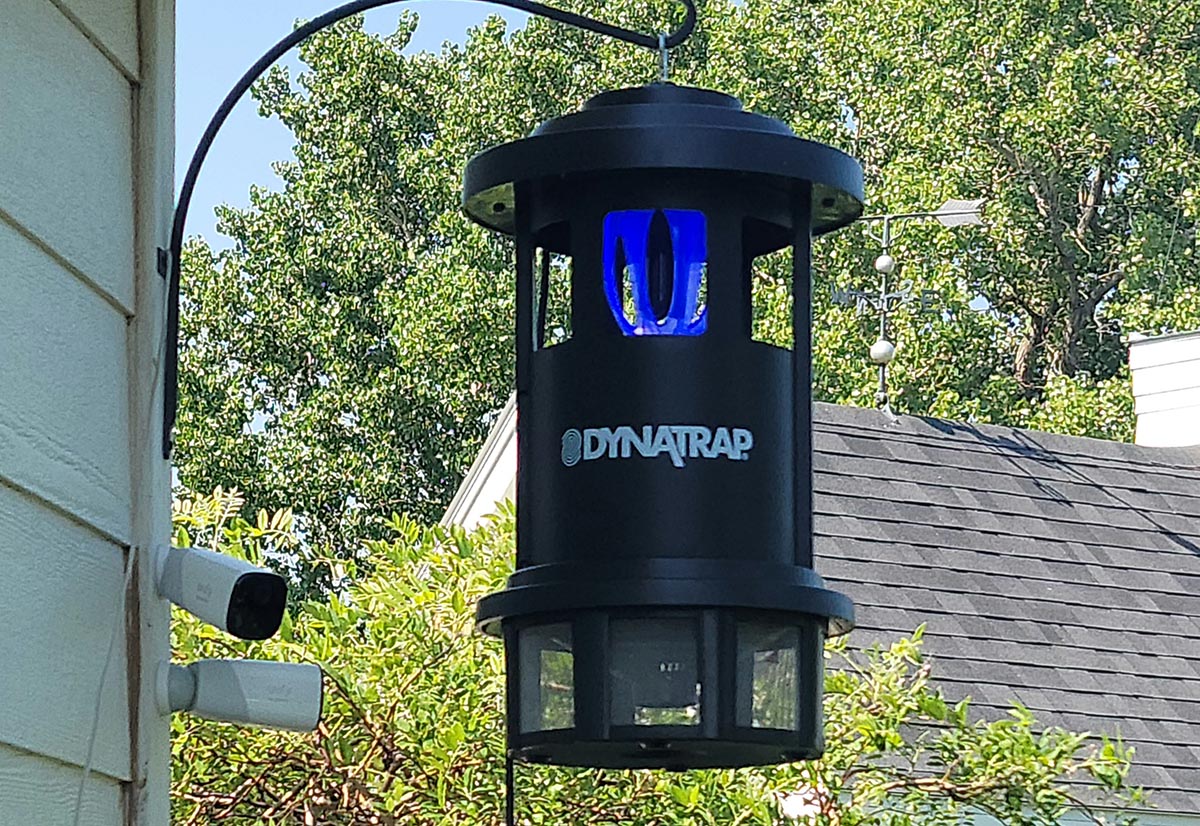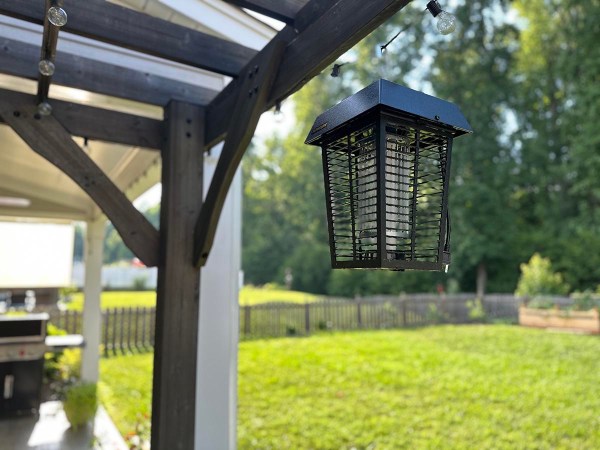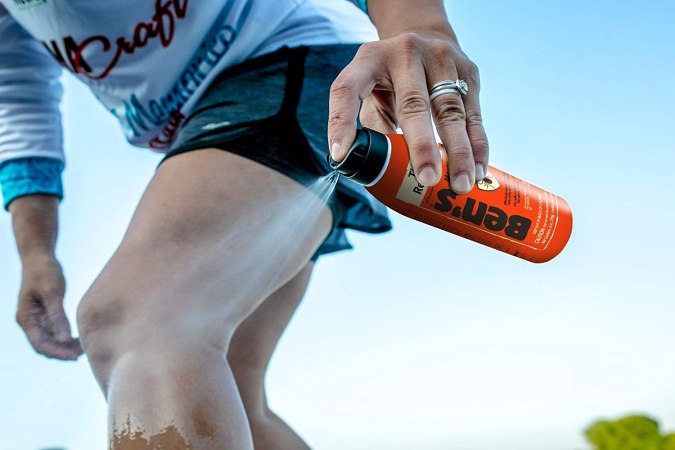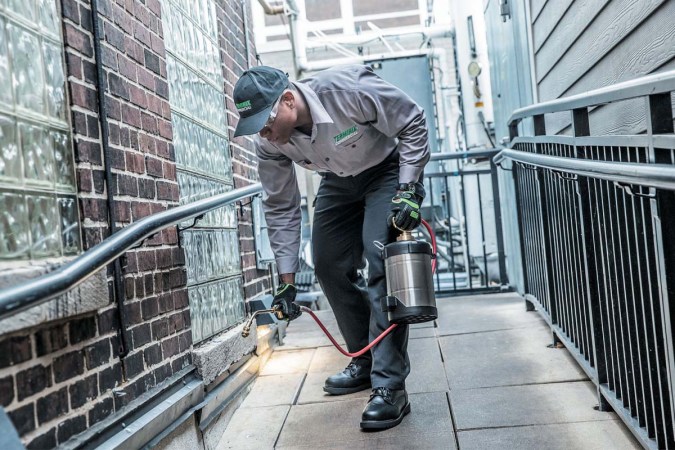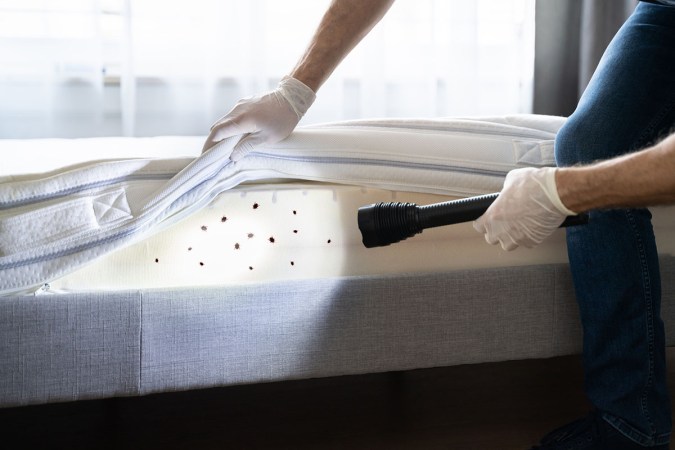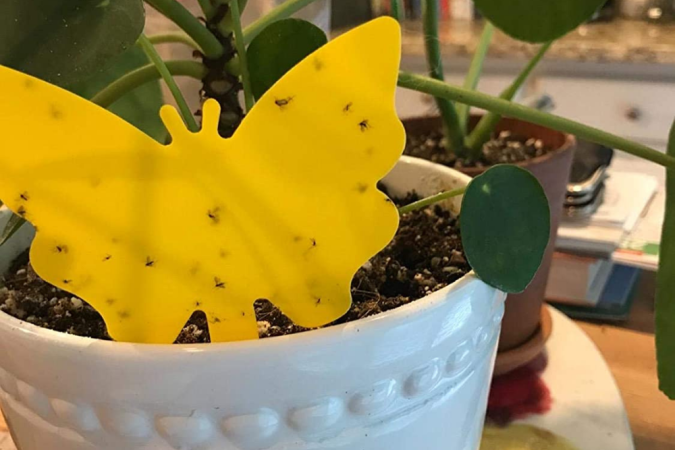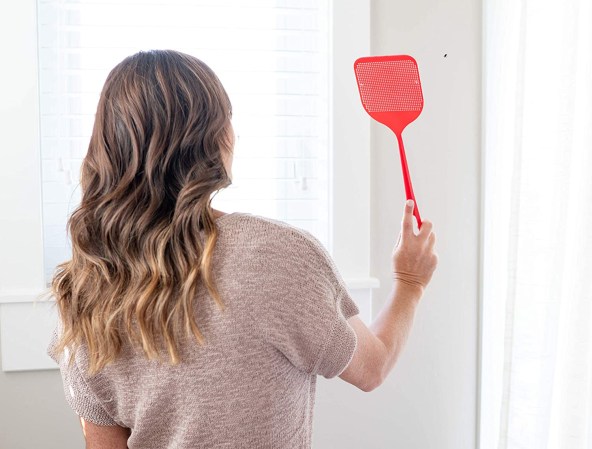We may earn revenue from the products available on this page and participate in affiliate programs. Learn More ›
When it comes to battling mosquitoes and other flying insects, finding an effective and reliable solution can be a daunting task.That’s where the DynaTrap ¾-acre mosquito trap comes into play. As a trusted brand in insect control, DynaTrap has earned a reputation for delivering innovative products that tackle the nuisance of flying pests.
I tested the DynaTrap as part of a larger hands-on test conducted in search of the best mosquito trap. While it’s not perfect, it reduced the mosquito population in my yard while also banishing other annoying flying insects. The most effective (and immediate) way to protect yourself and your family from mosquitoes and the diseases they can spread is to use a good insect repellent. However, that may not always be feasible, so using a combination of bug-fighting methods to reduce overall risk is imperative.
Ahead, learn more about the DynaTrap (both pros and cons) to see if it can play a beneficial role in keeping your yard bug-free this summer.
DynaTrap ¾-Acre Insect Trap: At a Glance
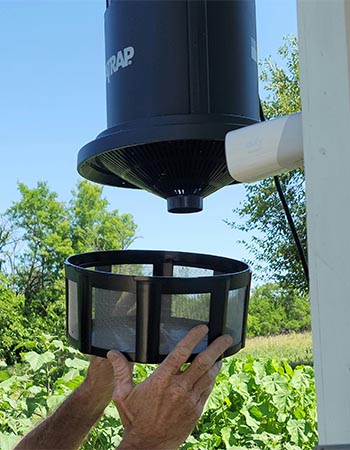
Rating: 8.75/10
PROS
- Easy assembly; a simple twist-on motion attaches the bug-catch basin
- Weather-resistant construction is able to withstand rain and windy conditions
- Covers an area up to ¾ acre, providing extensive protection against flying pests
- Powerful yet quiet fan captures flying insects as they approach
- Versatile design is suitable for both indoor and outdoor use
CONS
- Does not kill the captured insects, which may lead to some escaping while emptying the trap
- May inadvertently capture beneficial pollinators, such as honey bees
- Rather large size (25 inches tall and 15 inches in diameter) may visually detract from the landscape
Get the DynaTrap insect trap at:
What is the DynaTrap ¾-acre insect trap?
The DynaTrap ¾-acre mosquito trap is an advanced insect-control device that effectively captures flying pests, including mosquitoes, flies, moths, and more. By utilizing a combination of heat, light, carbon dioxide, and a powerful yet silent vacuum fan, this trap attracts and captures insects within a range of up to ¾ acre.
With a durable, all-weather design, the DynaTrap can be used both indoors and outdoors, providing comprehensive protection against annoying and disease-carrying flying insects. While primarily designed to target mosquitoes, its broad effectiveness against various flying pests makes it a versatile solution for creating a more comfortable and insect-free environment.
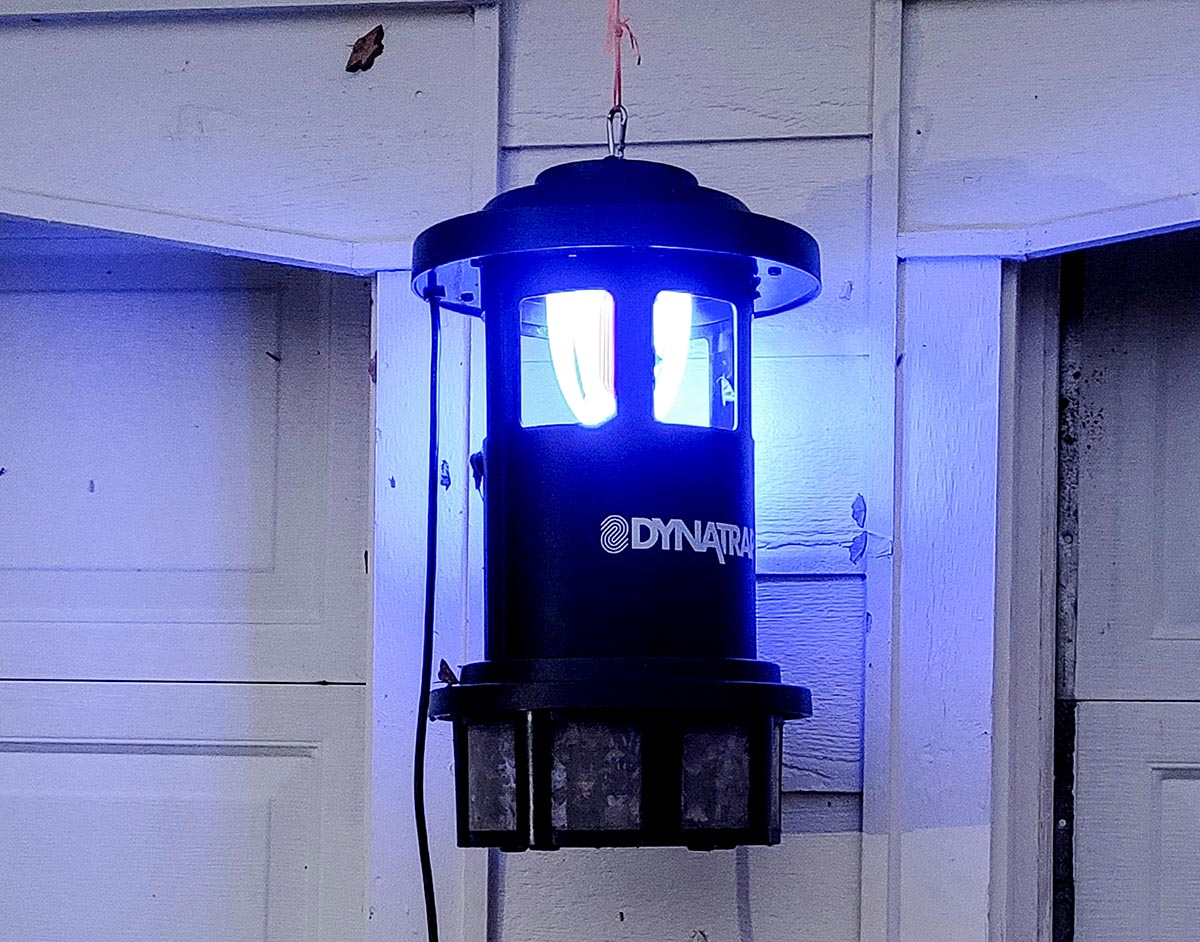
How does the DynaTrap work to capture flying insects?
The DynaTrap employs a three-way mechanism that loosely mimics the human body to capture flying insects, including an exclusive Ti02 titanium dioxide–coated surface that produces a trace amount of carbon dioxide. One of the things that turns human beings into a mosquito magnet is the carbon dioxide in the air they exhale. Mosquitoes and other biting insects also seek warm human or animal bodies, and a bright UV light on the DynaTrap emits a small amount of heat, which functions as an additional lure.
The brightness of the DynaTrap’s UV light is a known attractor of many types of insects; it attracts not only mosquitoes and flies but also moths, gnats, fruit flies, and stink bugs. While the DynaTrap is billed as being able to attract wasps, I never found a wasp in the catch basin, although I hung it on a garage eave near a wasp nest, where dozens of wasps were flying back and forth.
Lastly, a powerful yet whisper-quiet vacuum fan pulls the insects into a retaining cage, where they dehydrate and eventually perish. This effective combination of carbon dioxide, light, and a vacuum fan ensures the efficient capture of a wide range of flying pests, providing a reliable solution for insect control.
How far does the DynaTrap’s coverage range extend?
This DynaTrap (several other DynaTrap models are also available) claims a coverage area of up to ¾ acre, which is a fairly extensive range of protection against flying insects. However, several factors can potentially influence the range and effectiveness of the trap. From my observations, these factors include:
- Location and placement: Placing the DynaTrap in an open area with minimal obstructions allows for better airflow and insect attraction. Additionally, it helps to put it in an area where flying insects are most prevalent.
- Environmental conditions: Wind patterns could affect the dispersal of the carbon dioxide emitted by the trap, potentially reducing its range. For example, the carbon dioxide could carry downwind.
- Nearby attractants: Other sources of light, heat, or carbon dioxide in the vicinity can compete with the trap’s allure, potentially reducing its effectiveness. Minimizing competing attractants (including pets and humans) near the trap can help optimize its range.
- Maintenance and cleaning: Regular maintenance and cleaning of the trap, including emptying the catch basin and replacing consumable parts like bulbs or attractant surfaces, can help ensure optimal performance and maximize the trap’s range.
Can the captured insects escape from the trap? If so, can escape be prevented?
During my experience with the DynaTrap insect trap, I encountered a situation where the captured insects had the potential to escape while I was trying to dump them. It’s important to understand that this trap does not zap or otherwise kill the insects—they must die on their own in the catch basin.
I emptied the basin every morning because it was always full of captured insects—mostly moths but also several mosquitoes and other bugs. The first morning, when I twisted the basin off the unit, a live swarm of bugs enveloped me. The second morning, I slipped a plastic bag over the basin before removing it, but several dozen bugs still escaped.
By the third morning, I wised up and sprayed an aerosol bug killer on the catch basin before removing it from the unit. I used HotShot Flying Insect Killer because that’s what I had on hand. The spray ensured that the captured insects were immobilized and unable to escape. I could safely dispose of the trapped insects without risking them flying away and rejoining the outdoor environment.
However, I had hoped the DynaTrap would kill mosquitoes and other flying pests without using chemicals. Those who are looking for a natural way to get rid of mosquitoes might want to consider a trap that uses a zapper to kill the insects on contact. Alternatively, if you go with the DynaTrap, consider spraying the catch basin with a natural pesticide that’s safe for use around pets or children, such as EcoSmart Flying Insect Killer.
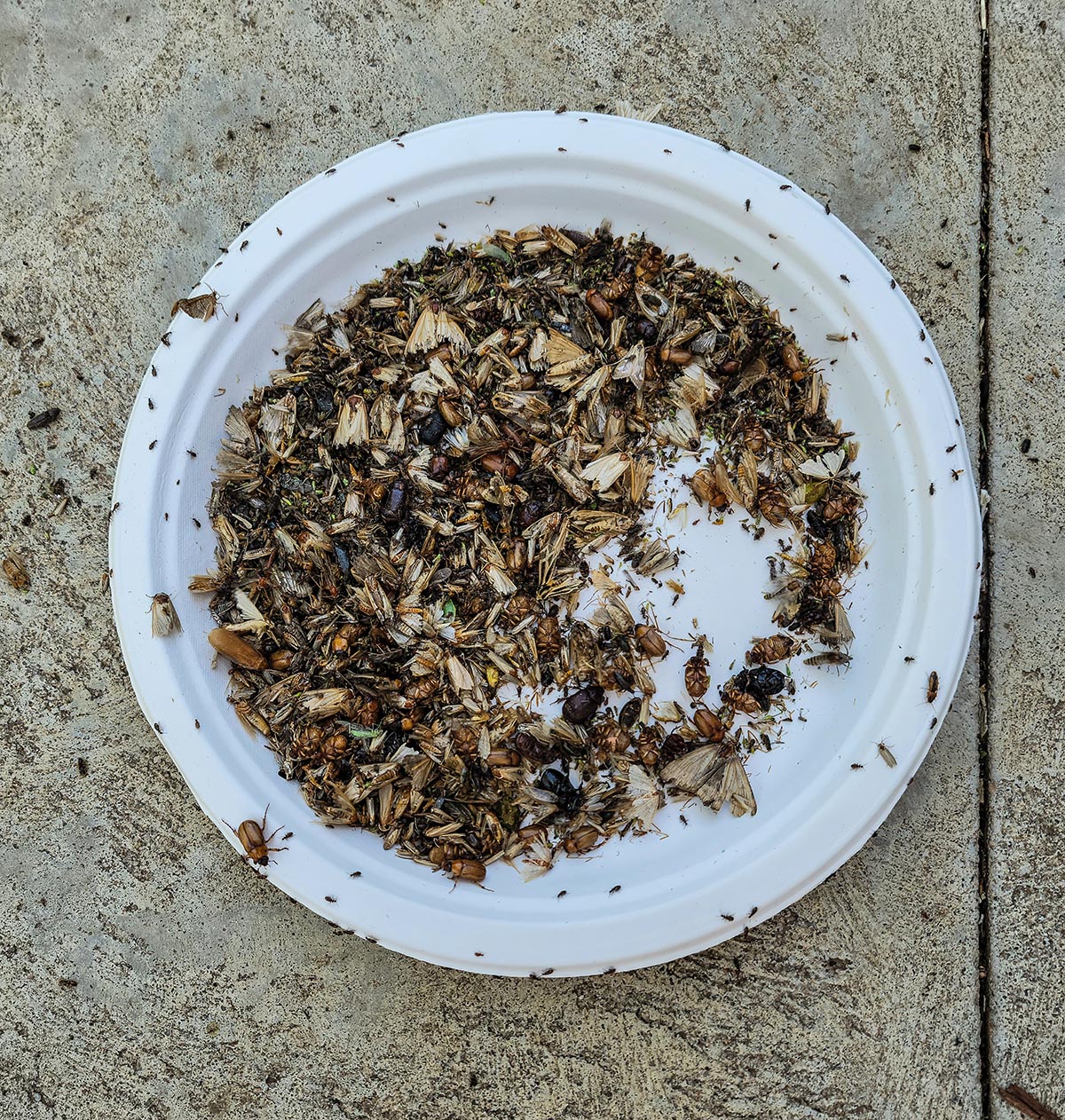
Is the DynaTrap an eco-friendly way to kill mosquitoes?
While effective in capturing mosquitoes, it’s important to note that the DynaTrap is not a selective trapping method. Unfortunately, it did trap some honey bees, and these valuable pollinators died inside. This aspect raises concerns regarding the DynaTrap’s eco-friendliness as an insect killer. Although the trap does not rely on harmful chemicals or pesticides, its mechanism of utilizing carbon dioxide, a UV light, and a vacuum fan can inadvertently capture beneficial insects such as honey bees and ladybugs.
For this reason, I recommend carefully considering the trap’s placement, making sure to keep it well away from plants and water sources that honey bees are known to frequent.
Does the trap require any special maintenance or cleaning?
Inspecting the trap’s bug-catch basin regularly and emptying it as needed is recommended. The captured insects should be disposed of properly. The catch basin should also be cleaned periodically to remove any dead-bug residue or debris that may accumulate. The trap’s components, such as the UV bulb and titanium dioxide–coated surface, may require occasional replacement.
The manual that came with the DynaTrap claims the UV bulb will last an average of 3,000 hours, or approximately 4 months. Cleaning the trap and basin is recommended weekly. I found it helpful to brush the underside of the unit (after removing the catch basin) with a small whisk broom that removed all the debris. Once a week, I rinsed the catch basin after dumping it using the nozzle on my garden hose. That seemed to work well.
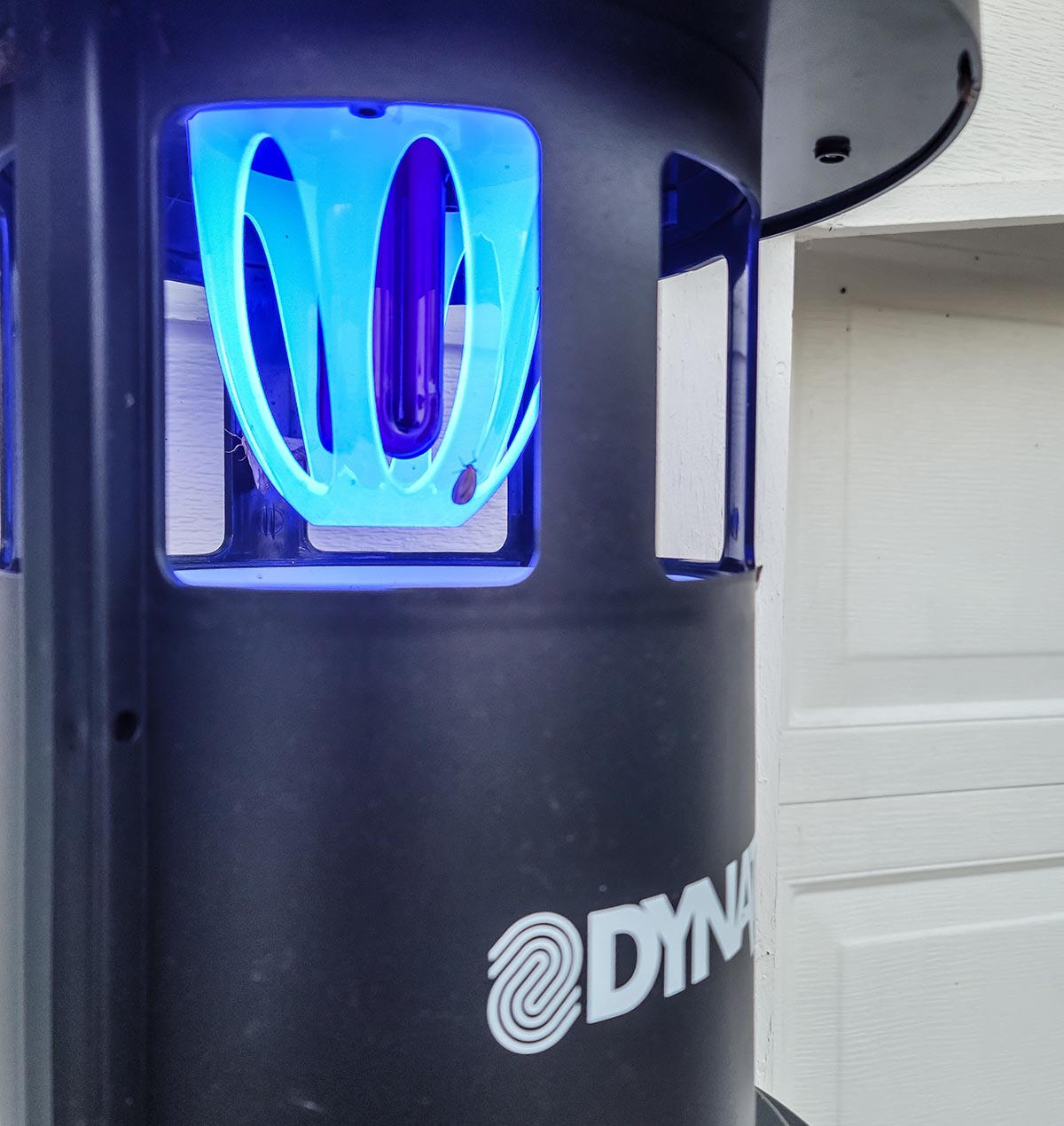
Is the DynaTrap insect trap right for you?
If you have a large outdoor area of up to ¾ acre, the DynaTrap provides extensive coverage and protection against mosquitoes, flies, moths, and other flying pests. It utilizes an ultra-bright UV light, a light-enhancing diffuser, and a carbon dioxide lure to attract insects effectively. The powerful yet quiet vacuum fan then captures them in a retaining cage, leading to their eventual dehydration and demise.
However, there are some situations where the DynaTrap may not be the best mosquito control solution. If you have a smaller yard or living space, investing in a trap designed for a smaller area may be more cost-effective. Additionally, if you have specific concerns about preserving beneficial insects like pollinators, alternative mosquito control methods may be more suitable, as the DynaTrap is not selective and can inadvertently trap and harm non-target insects.
It’s also worth noting that the DynaTrap falls on the pricier side compared with some other options on the market. While it offers reliable performance and a durable build, the higher price point may be a consideration for budget-conscious buyers.
Where to Buy the DynaTrap Insect Trap
Get the DynaTrap insect trap at:
More of the Best Mosquito Trap Options
If the ¾-acre DynaTrap isn’t quite what you’re looking for, check out our lineup of the best mosquito traps, which features several other products in a wide price range. There, you’ll find additional DynaTrap reviews and information about choosing the best insect-trapping product for your needs and budget. If a commercial insect trap isn’t your thing, consider other practical ways to get rid of mosquitoes and keep your family safe this season.
Meet the Tester
Glenda Taylor is a product tester and writer specializing in the construction, remodeling, and real estate industries. She and her husband own a general contracting company, and Taylor is experienced in both residential and commercial building applications. She tests a wide range of power tools as well as other home improvement, household, and lawn-and-garden products.

